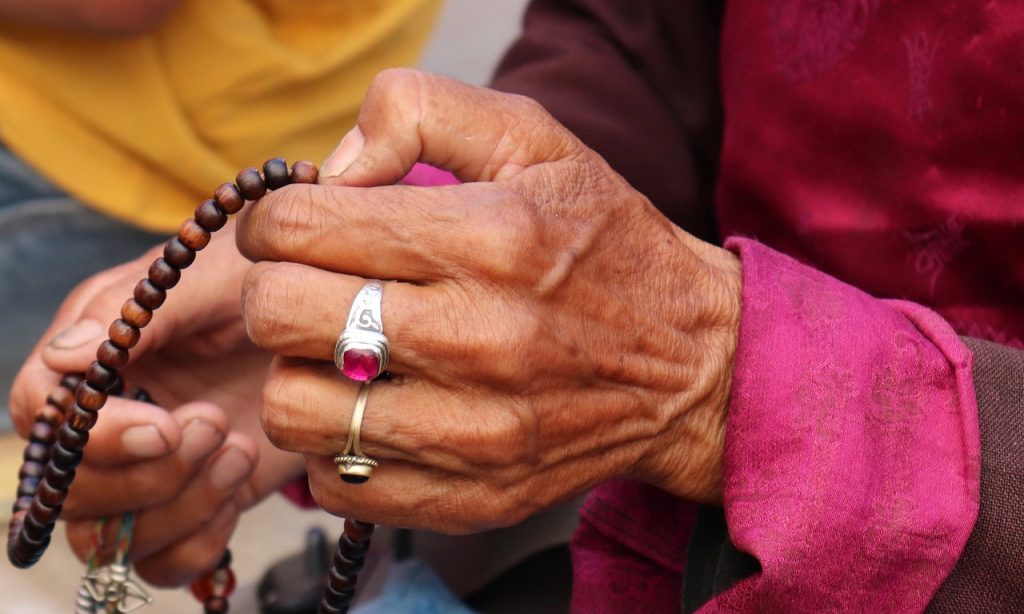Adventure Paradise
- Home
- Diving into the Rich Cultural Tapestry of Ladakh: Festivals and Traditions
Diving into the Rich Cultural Tapestry of Ladakh: Festivals and Traditions

When we think of Ladakh, we think of vast icy plains and mountainous regions, its many majestic natural features, and its culturally rich traditions such as its festivals. Festivals of Hemis, Losar, and Galdan Namchot, among others, are all part of the culture of the Ladakhi people and their culture. In the following article, we’ll dive deep into the festivals and traditions that Ladakh has to offer that attract millions of people all around the world throughout the various festive seasons, and their significance.
Hemis Festival: Unveiling the Mystical Mask Dance
The then-king Senge Nampar Gyalva founded the Hemis monastery in AD 1672. The Hemis monastery is accessible by road from Leh, which is around forty kilometers away.
The Hemis monastery may trace its intellectual origins back to the ancient Tantric Buddhist tradition. Hemis Festival is observed on the tenth day of the fifth month in the Tibetan calendar, which corresponds to June or July in the Gregorian calendar.
The major yearly celebrations in Ladakh’s villages take place in the winter, whereas Thseshu is celebrated in Hemis in the summer.
The captivating Cham Dance, which is performed by the residing monks of Hemis monastery to the deafening rhythms of drummers, cymbals, and various other Tibetan musical instruments, is the festival’s main attraction.
Losar: Ladakh’s Joyous New Year Celebration
Losar marks the new year of the Buddhist community in Ladakh. A large-scale event with traditional dances, music, and special foods. Losar Takes Place for about 3 days, in January or February depending on the Tibetan Calendar. It is an important part of the rich Cultural Tapestry of Ladakh.
The region of Ladakh as together celebrates this event, people get together to observe and partake in the celebration and tourists flock in crowds to take part in it as well mainly because of its unique folk dances and musical acts. Special meals are served followed by evening festivities during this time of the new year. It is also considered the Best Time to Visit Leh Ladakh by tourists.
Galdan Namchot: Celebrating the Enlightenment of Tsongkhapa
The Galdan Namchot honors both the passing and the birthday of Je Tsongkhapa. It pays homage to his heritage. Je Tsongkhapa was a well-known Tibetan Buddhist scholar and teacher.
The dates of the yearly Galdan Namchot Festival are subject to change, although it always takes place in December.
During this period, specialty preparations include the notorious Thukpa, tea, and momos. People go to their family members and have meals. Individuals give each other traditional ceremonial scarves called khataks.
Monks engage in a variety of traditional dances while dressing in vibrant apparel. During Galdan Namchot, dwellings, public buildings, and monasteries are illuminated. To symbolize the triumph of light over darkness, people prepare and light butter lamps.
Both domestic and foreign visitors refer to the Galdan Namchot as the Festival of Light in Ladakh. Numerous other neighboring regions, including Tibet, Nepal, and Mongolia, also commemorate it.
The event not only honors Je Tsongkhapa but also ushers in Pre-Losar or the new year.
Traditional Ladakhi Wedding Customs: A Union of Cultures
Having a wedding in Ladakh the traditional way is beautified further not only with its colorful traditions but also the lakes and mountains it surrounds.
In Ladakh and among Ladakhi people, the boy’s parents often arrange weddings when he is around twenty years old. The girl’s parents, who are typically two to three years younger than the boy’s, are visited by the boy’s parents to get their consent to the match.
Lama consultation is required to determine an auspicious date if it is approved. The celebration of the marriage typically lasts all night, starting in the late evening with the arrival of the village families, who all bring food for the wedding feast.
It is customary for the groom to dance and drink change during the whole nightlong celebration, but the bride is supposed to stay seated, frequently in the kitchen.
When someone gets married for the second time (because of a death in the family or a divorce), or when the couple is impoverished, a particular kind of marriage known as Skus- te-Khyong-ches, or “to bring by theft,” is performed.
Over the ages, marriage rituals have evolved, and Ladakh has been a part of these cultural shifts. In addition to the customary marriages observed by the Ladakhi people, families now typically incur high wedding expenses and add lavish presents and decorations to their weddings, something that was not formerly the case.
Kathok Chenmo Dancing
A dance form for the nobles that honors the splendor and dynasty of Ladakh is called Kathok Chenmo.
In the past, the monarchs frequently hired the Kathok Chenmo dancers as their entertainers after carefully selecting them.
Dance Spao
In the language of Ladakh, spao signifies warrior. Ladakh’s renowned mythology, which includes the legendary Ling Gyalam Kesar, is linked to this warrior dance. In the past, it was done during the winter, when visitors had plenty of free time to engage in such leisure.
